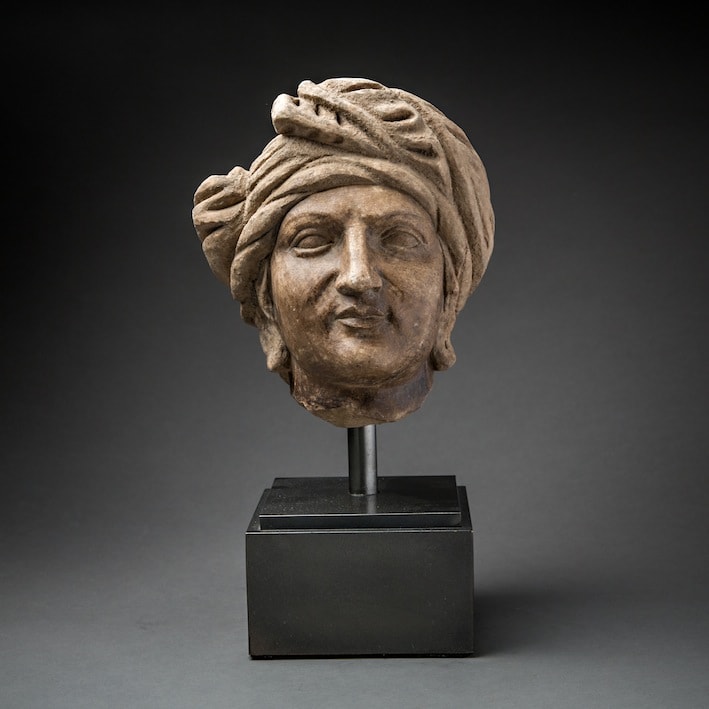Royal Marble Head, 300 BCE - 100 BCE
Marble
35.6 x 15.2 cm
14 x 6 in
14 x 6 in
HE.0015
Further images
Exquisite marble head, sculpted in the round. Oval face with large, almond eyes beneath curving brow, slender triangular nose and small mouth; surmounted by turban. One can discern in the...
Exquisite marble head, sculpted in the round. Oval face with large, almond eyes beneath curving brow, slender triangular nose and small mouth; surmounted by turban. One can discern in the arresting physiognomy precursory elements of a set of ideals that came to characterize portraiture in this region over the next few hundred years. For example, the almond eyes, nose, mouth and elongated earlobes would in time become part of a formula used extensively on portraits of Buddha. Not only do we get an idea as to the evolution of the artistic vocabulary – this piece attesting its formation - but also see influence across a vast geographical area. Afghanistan sits at a confluence of trading routes along the silk route. A gateway to India, carrying trade and migration from the Mediterranean to China.
The conquests of Alexander the Great in 330 BCE set in motion a chain of successive empires in the region, all of which left their imprint in art. What emerges is an artistic canon that incorporates Greek, Hindu and Buddhist influences.
The head of this royal, while depicted with turban and true to local tradition is rendered in line with the distinct Greco-Buddhist iconography that typifies art of this period following the spread of Greek influence throughout the subcontinent.
The conquests of Alexander the Great in 330 BCE set in motion a chain of successive empires in the region, all of which left their imprint in art. What emerges is an artistic canon that incorporates Greek, Hindu and Buddhist influences.
The head of this royal, while depicted with turban and true to local tradition is rendered in line with the distinct Greco-Buddhist iconography that typifies art of this period following the spread of Greek influence throughout the subcontinent.





